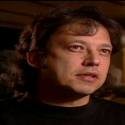August 15, 2006
Canadian Cryptid Cops Part IV
Many people know the story of Mrs. Jeannie Chapman’s encounter with a sasquatch at Ruby Creek in the Fraser Valley of British Columbia in 1941. She and her children fled the family home when a huge sasquatch showed up on her property. When her husband, George Chapman, returned to the property with fellow workers from the railway company he worked for, they found huge footprints all over the place. A cast of one of these prints was made by a sheriff of the Whatcom County Sheriff’s Department, whom also had the foresight to make a tracing of the print. The cast of the track was unfortunately broken so all that remains of the event is the tracing he made.
This tracing is well known throughout the sasquatching community and has been reproduced by John Green in his books. The unusual thing about the tracing is that it appears to have just four toes. What does all this have to do with the RCMP you might ask? In 1988, RCMP members from The Pas, Manitoba came across huge tracks near this northern community and when one compares these tracks with the tracing of the sasquatch print from the Chapman property, one can’t fail to notice that they are a perfect match.
There is little doubt that the track in The Pas is genuine as the RCMP members found no evidence of hoaxing whatsoever. Think for one second, though, of the implications of this find. If both the sets of tracks are from the same creature, then it must have walked undetected for 1,500 kilometres across Canada and completely avoided human contact on the way. Some would say how could it possibly have done that in a country with a population of 30 million people? Well, the answer is it could have done so taking a variety of different routes through the interior of this vast country. Canada is reasonably well populated, but most of our 30 million people are concentrated in major cities, our rural, forested and mountainous regions are still relatively sparsely populated.
So it is perfectly plausible that a sasquatch documented by an American police officer in British Columbia could be rediscovered some 47 years later in Manitoba, three provinces away. We will probably never know for sure if whatever left the tracks on the Chapman property are from the same creature that left the tracks in Manitoba, but they appear to be a very close match.
 About John Kirk
About John Kirk
One of the founders of the BCSCC, John Kirk has enjoyed a varied and exciting career path. Both a print and broadcast journalist, John Kirk has in recent years been at the forefront of much of the BCSCC’s expeditions, investigations and publishing. John has been particularly interested in the phenomenon of unknown aquatic cryptids around the world and is the author of In the Domain of the Lake Monsters (Key Porter Books, 1998).
In addition to his interest in freshwater cryptids, John has been keenly interested in investigating the possible existence of sasquatch and other bipedal hominids of the world, and in particular, the Yeren of China. John is also chairman of the Crypto Safari organization, which specializes in sending teams of investigators to remote parts of the world to search for animals as yet unidentified by science. John travelled with a Crypto Safari team to Cameroon and northern Republic of Congo to interview witnesses among the Baka pygmies and Bantu bushmen who have sighted a large unknown animal that bears more than a superficial resemblance to a dinosaur.
Since 1996, John Kirk has been editor and publisher of the BCSCC Quarterly which is the flagship publication of the BCSCC. In demand at conferences, seminars, lectures and on television and radio programs, John has spoken all over North America and has appeared in programs on NBC, ABC, CBS, PBS, TLC, Discovery, CBC, CTV and the BBC.
In his personal life John spends much time studying the histories of Scottish Clans and is himself the president of the Clan Kirk Society. John is also an avid soccer enthusiast and player.
Email • Facebook • Twitter •
Filed under Bigfoot, Cryptid Universe, Cryptozoology, Evidence, Eyewitness Accounts, Forensic Science, Sasquatch
